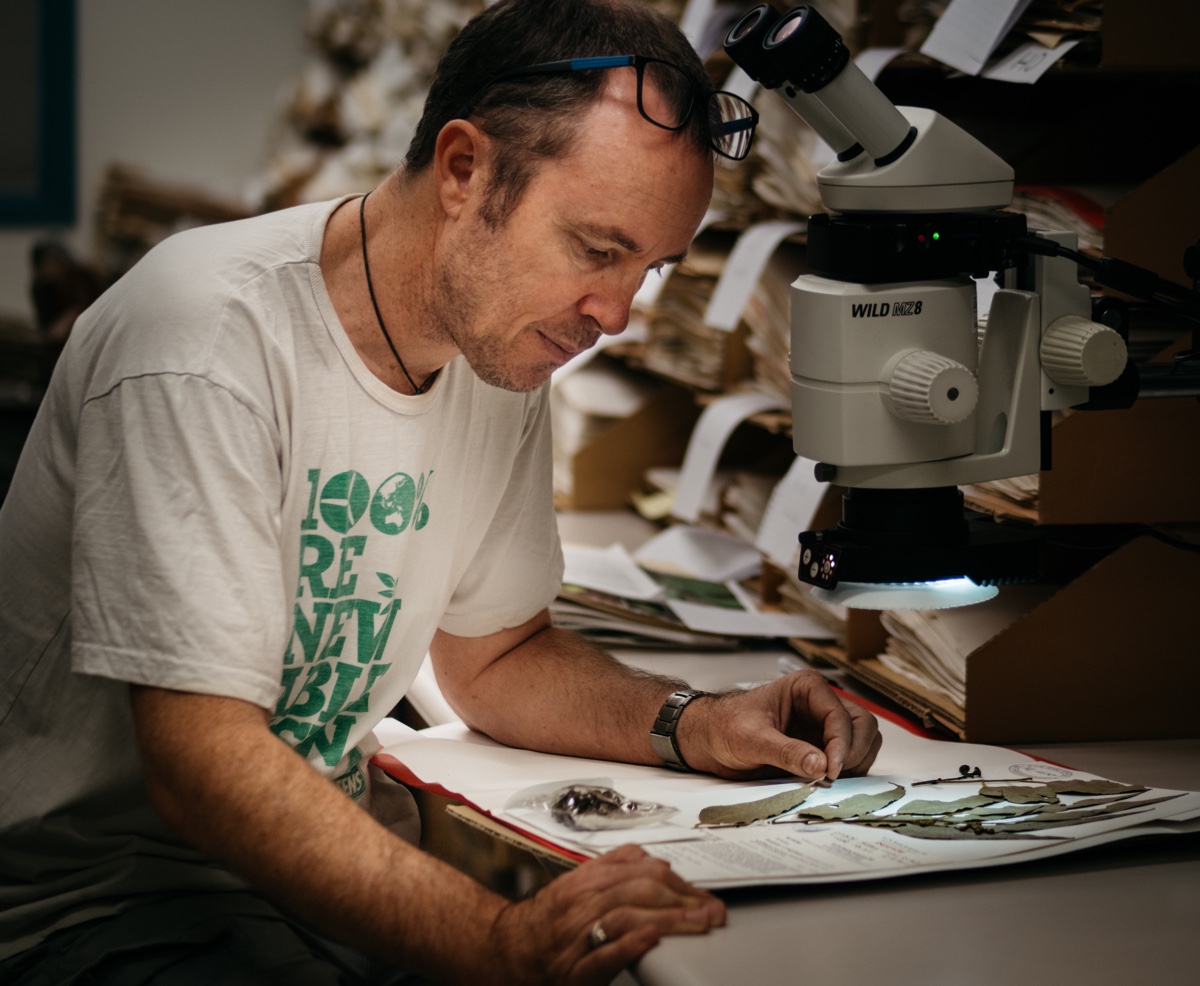New England officially has a new eucalypt — the Dalveen blue box, which occurs over a small range in the Granite Belt, on the NSW-Queensland border.
Eucalyptus dalveenica was painstakingly identified as a separate species by University of New England (UNE) Honours student Tim Collins, who looked at factors like DNA and eucalypt oil composition to arrive at his conclusion.
In persuading the botanical world that Dalveen blue box is a separate species, Mr Collins has taken the number of named eucalypt species in New England to more than 70.
Dalveenica was long considered to be an outlier population of Eucalyptus magnificata, found in the New England gorge country, until Mr Collins and his supervisors, UNE botanists Professor Jeremy Bruhl and Dr Rose Andrew, took a closer look at the Granite Belt population.
Along with size and shape differences, Mr Collins said the leaves smelt different when crushed to release their oils.
This proved to be an important clue to direct the botanical detective work that he needed to prove that Dalveenica was a different species.
“When you buy eucalyptus oil, you’re usually buying more than 90 per cent cineole, which is the compound everybody associates with eucalyptus oil,” Mr Collins said.
“But there are many other compounds in the natural oils, and the ratios of those compounds can vary between species.”
In analysis, dalveenica oils proved to have a different suite of compounds to magnificata. The clincher came with DNA analysis, showing that dalveenica has a demonstrably different genome to the more southern population.
Mr Collins spent a year on developing his dalveenica thesis, and many months more going through the rigorous scientific publishing process in order to introduce the new species to the world.
He hopes it won’t be his last.
“It’s estimated that we’ve only named 60-70 per cent of the plants in Australia, and most people only know our native flora through a handful of common names. In the eucalypts, people might be able to name river red gum, ironbark, stringybark, mountain gum — yet there are more than 850 named eucalypts in Australia, and presumably many more we don’t know about.”
"It’s important that we name and describe new species because this is the foundation upon which all other research is built."
"Australia’s biodiversity is unique and diverse and represents opportunities for the discovery of new medicines and industrial innovations amongst the myriad of novel compounds produced by plants and animals."
A type specimen of Eucalyptus dalveenica — the reference against which all future comparisons with other species will be made — has been lodged in UNE’s NCW Beadle Herbarium, joining about 100,000 other plant specimens from the region and further afield.


